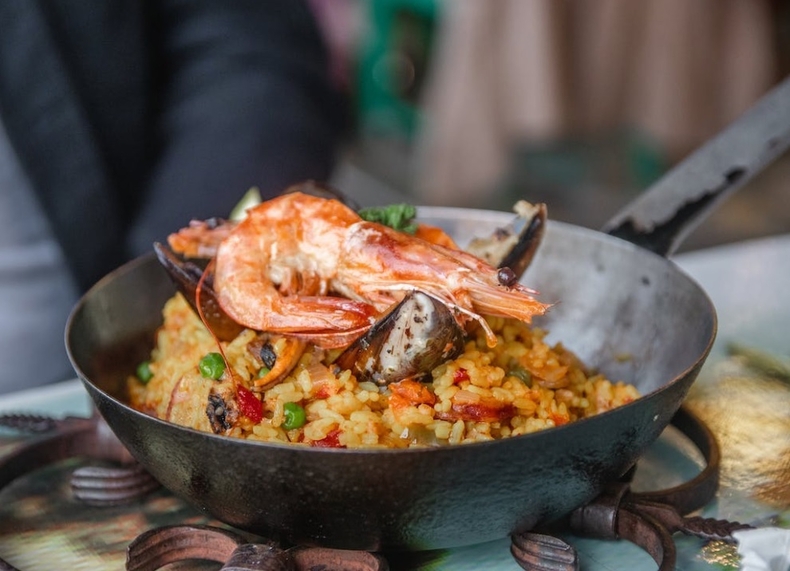
Increased Risk of Foodborne Bacteria Growth Due to High Temperature Variations in Autumn.
When cleaning various food items, prioritize washing vegetables, meat, and seafood in that order.
Over the past five years, it has been revealed that autumn is the season with the highest occurrence of food poisoning cases following summer. The reason for this is the significant temperature fluctuations in autumn, with cooler mornings and evenings and higher daytime temperatures, which make it easier for foodborne bacteria to proliferate.
When preparing a packed meal for outdoor activities on a brisk day, it is essential to be cautious about the substantial temperature variations. If you have prepared kimbap, for instance, it is advisable not to touch ingredients such as eggs and ham that go into the kimbap, as well as pickled radish and crab meat, which can be consumed without cooking. Even for ingredients that can be eaten raw, it is a good practice to thoroughly cook them and then cool them before storing in containers.
For meat and eggs, it is recommended to heat them to an internal temperature of 75°C or higher for at least 1 minute, while seafood like clams and mussels should be heated to 85°C or higher for 1 minute or more to ensure they are thoroughly cooked before consumption. For drinking water, it would be better to drink mineral water or boiled water.
When washing food ingredients, make sure to rinse them under running water, and if you are washing various ingredients, follow the order of vegetables, meat, and seafood for washing.
For dishes like kimchi or salads that are consumed without heating, it is efficient in preventing food poisoning to soak the ingredients in a sterilizing solution like chlorinated water for at least 5 minutes and then rinse them at least three times under running water before cooking.
When storing food during outdoor activities, especially in places with relatively high temperatures like inside sun-exposed vehicles, there is a risk of foodborne bacteria proliferation. To prevent food poisoning, it is essential to use items like iceboxes and store food below 10°C.
(한국어 번역)
한국다문화뉴스 = 심민정 기자ㅣ가을철 높은 일교차로 식중독균 증식 우려
여러 가지 식재료 세척 시, 채소, 육류, 어류 순으로 세척
지난 5년간 계절별 식중독 발생 현황 중 여름 다음으로 식중독이 많이 발생하는 계절이 가을인 것으로 나타났다. 9월부터 11월인 가을철은 아침, 저녁에 쌀쌀한 것에 비해 낮 기온이 상승하기 때문에 식중독균이 증식하기 쉽기 때문이다.
선선한 날씨에 도시락 등을 준비하여 야외활동을 하는 경우 높은 일교차를 주의해야 하는 이유다. 김밥을 준비했다면 김밥에 들어가는 달걀, 햄 등의 식재료와 단무지, 맛살 등 조리 없이 섭취 가능한 식재료들은 맨손으로 만지지 않는 것이 좋다. 바로 섭취가 가능한 식재료라고 하더라도 충분히 익힌 뒤 식혀 용기에 담는 것이 좋다.
육류와 달걀 등은 중심온도 75℃, 1분 이상, 굴·조개 등 어패류는 85℃에서 1분 이상 가열해 완전히 익혀 섭취하는 것이 좋다. 식수는 생수 또는 끓인 물을 마시는 것이 좋다.
식재료를 세척할 때는 흐르는 물에 세척하고, 여러 가지 식재료를 세척할 경우에는 채소, 육류, 어류 순으로 세척하는 것이 좋다.
가열하지 않고 섭취하는 겉절이나 샐러드는 식재료를 염소살균제 등에 5분간 담근 뒤 흐르는 물에 3회 이상 세척한 후 조리하는 것이 식중독 예방에 효율적이다.
야외활동에서 식품을 보관할 경우, 햇볕이 드는 차량 내부 등 비교적 온도가 높은 곳에 조리식품을 보관하면 식중독균 증식의 위험이 있다. 따라서 식중독 예방을 위해서는 아이스박스 등을 사용해 10℃ 이하로 이동·보관해야 한다.

